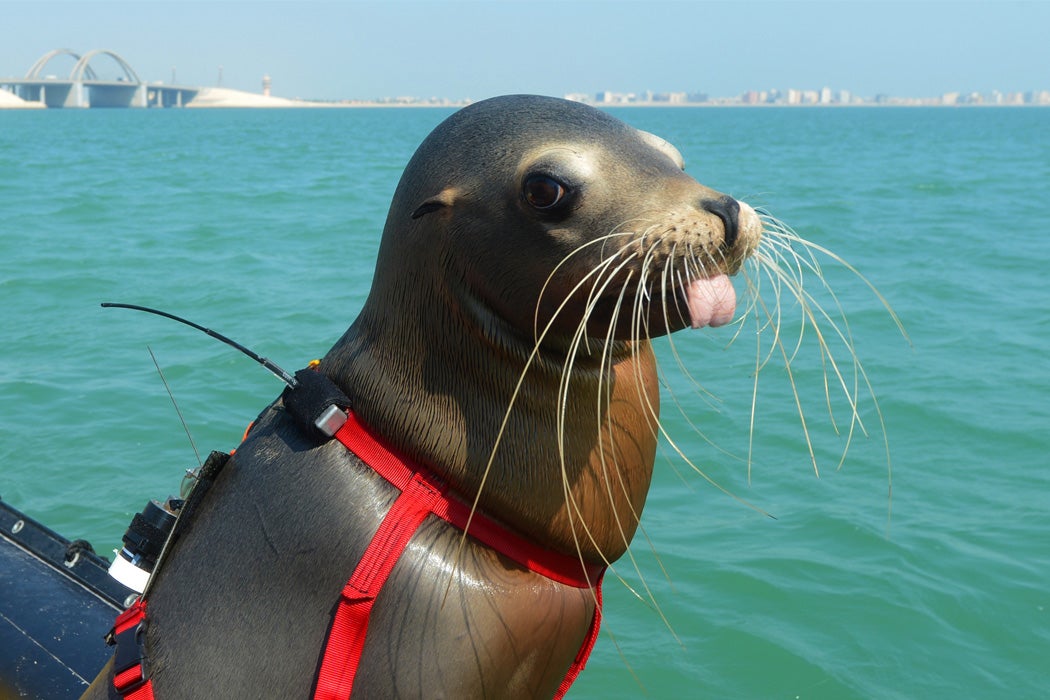In late April 2019, a friendly beluga whale surfaced off the shores of Norway and began following fishermen’s boats, tugging on loose straps for attention, seemingly asking for food.
But that’s not what grabbed world headlines. What caught global attention was the harness strapped to the cetacean’s back, meant to carry a camera, leading some to theorize that the beluga was a stray Russian spy. (After much speculation, most outlets are reporting the whale was likely trained as a therapy animal.)
Bizarre as it sounds, the use of military mammals is in fact a common military strategy, even in the U.S. According to science writer Ceiridwen Terrill, marine mammals have been deemed “invaluable components” of the defense force.
In the cold war, the Soviet military was said to have parachuted military-trained dolphins from heights of nearly two miles. Dolphins were also used in the study and design of underwater torpedoes. A pod of sea lions, known as Mk 5 Mod 1, was trained to retrieve explosives. In the U.S.’s 1969 Project Deep Ops, two killer whales and a pilot whale—Ahab, Ishmael and Morgan—were trained to retrieve objects that had been lost in the ocean, in conditions too deep for human divers to retrieve, and too rough for machines to handle.
Although stories like these capture the public’s imagination, the reality of the life of an animal in the armed forces is rather dark. As it is with humans, military training for animals is physically and psychologically punishing, and carries the inherent risk of casualties. Moreover, there isn’t the same level of oversight for animals in the military.
Unexplained deaths are a problem. Terrill writes,
the Marine Fisheries Service and Navy necropsy reports show that the Navy collected 146 dolphins of four species since 1962. Of this 146, 60 were still in service, 11 were transferred to private facilities, 5 had escaped, and 55 died. However, Fisheries Service records were incomplete; not all Navy dolphin necropsy reports were filed, not all dolphin deaths reported.
According to Terrill, abuse against animal trainees is another problem. She pinpoints common practices such as throwing fish outside pens during training (“baiting”), or denying food as a way to make animals more cooperative (“axing”).
Weekly Digest
The issue is complex. According to Terrill, some argue that after years, the military training pens are the only home the animals know, and attempting to free them or re-introduce them to the wild would be cruel. This is an idea that the animals’ behavior both supports and contradicts: some escape given the opportunity, while others, even in open water, will linger and wait for their trainers to arrive.
Today, dolphins, sea lions, and whales are still in used tracking and retrieving objects, as their natural senses are superior to technology in rough weather and noisy areas.







